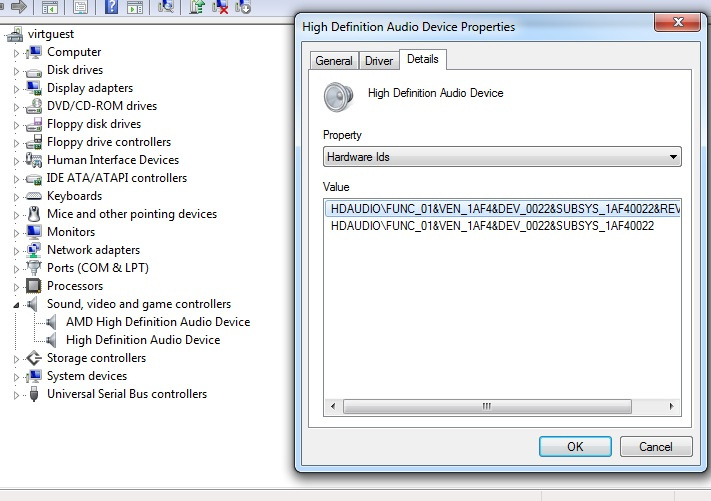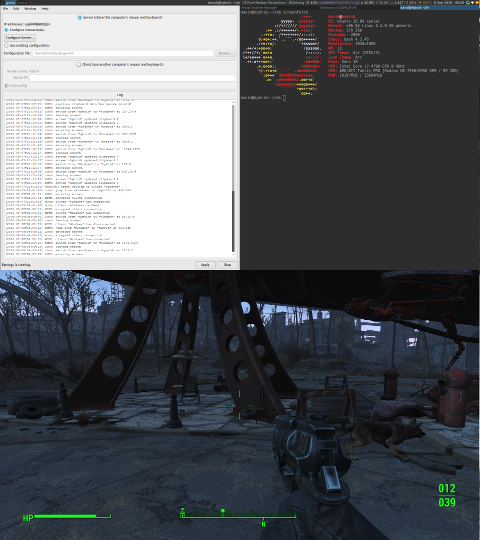

Connections to that port will be relayed to the VM on port 22.


#Qemu vga passthrough xp guest software
Try using curl or other UDP or TCP/IP software for testing. Thus, ping is not a suitable tool to test networking connectivity because it uses ICMP. Pass-through method only works for TCP and UDP connections. In order to overcome this restriction, add the following device option to the command line: The default graphics memory for clients is insufficient to be able to run with higher resolutions (eg 4K). Guest screen resolutions greater than 1920x1024 To get more performance use the same color depth for your host as you use in the guest. -vga qxl - More powerful graphics card for use with SPICE.
#Qemu vga passthrough xp guest install
Install x11-drivers/xf86-video-vmware in Linux guests, VMware Tools in Windows XP and newer guests. -vga vmware - VMware SVGA-II, more powerful graphics card.Linux, Windows XP and newer guest have a built-in driver. -boot d - Boot the first virtual CD-ROM drive.-boot c - Boot the first virtual hard drive.With this syntax you can set multiple drives. -drive file=IMAGE.iso,media=cdrom - Set a virtual CDROM drive and use the specified image file for it.-drive - Advanced configuration of a virtual CDROM drive:.-cdrom /dev/cdrom - Set a virtual CDROM drive and use the host drive for it.-cdrom IMAGE.iso - Set a virtual CDROM drive and use the specified image file for it.The AHCI emulation supports NCQ, so multiple read or write requests can be outstanding at the same time. -drive id=disk,file=IMAGE.img,if=none -device ahci,id=ahci -device ide-hd,drive=disk,bus=ahci.0 - Set emulation layer for an ICH-9 AHCI controller and use the specified image file for it.-drive file=/dev/sdX#,cache=none,if=virtio - Set a virtual VirtIO-BLK hard drive and use the specified partition for it.-drive file=IMAGE.img,if=virtio - Set a virtual VirtIO-BLK hard drive and use the specified image file for it.You need at least one virtio-scsi-controller and for each block device a -drive and -device scsi-hd pair. -device virtio-scsi-pci,id=scsi0 -drive file=/dev/your/block,if=none,format=raw,discard=unmap,aio=native,cache=none,id=someid -device scsi-hd,drive=someid,bus=scsi0.0 Very fast Virtio SCSI emulation for block discards ( TRIM), native command queuing ( NCQ).

-drive - Advanced configuration of a virtual hard drive:.-hda IMAGE.img - Set a virtual hard drive and use the specified image file for it.For instance: -m 256M ( M stands for Megabyte, G for Gigabyte). -m MEMORY - Specify the amount of memory (default: 128 MB).Use -smp $(nproc) to use all currently available cores. The number can be higher than the available cores on the host system. -smp - Specify the number of cores the guest is permitted to use.-cpu host - (Recommended) Emulate the host processor.To see a list of supported architectures, run: qemu-system-x86_64 -cpu ? -cpu - Specify a processor architecture to emulate.-object rng-random,id=rng0,filename=/dev/urandom -device virtio-rng-pci,rng=rng0 - Pass-through for host random number generator.) and hardware virtualization acceleration -machine type=q35,accel=kvm - Modern chipset (PCIe, AHCI.Substitute X for the number of the display (0 will then listen on 5900, 1 on 5901, etc).įor example to have QEMU send the display to a GTK window add the following option to the list: -display vnc=127.0.0.1: - Start a VNC server on display X (accepts an argument (X) for the display number).This is probably the option most users are looking for. -display gtk - Display video output in a GTK window.This option is different than the -nographic option. -display none - Do not display video output.-display curses - Displays video output via curses.-display sdl - Display video output via SDL (usually in a separate graphics window).There are a few available options to specify the kind of display to use in QEMU. 8.1 Guest screen resolutions greater than 1920x1024.


 0 kommentar(er)
0 kommentar(er)
